SaaS CX Playbook
Read about Sprig's recommended Customer Experience KPIs for Software as a Service (SaaS) Businesses
When designing and marketing products, it's critical to understand customer needs, pain points, and goals; however, resource-constrained teams often lack the time to capture user feedback at each stage of the process. Even teams that include dedicated UX teams are forced to prioritize only the most critical questions for product development and must sometimes make many decisions without fully understanding customer needs.
Customer experience (CX) measurement programs make it possible for fast-moving teams to access real-time user insights at scale by continuously measuring CX metrics and collecting user feedback across the customer journey. A comprehensive CX measurement program not only helps you understand whether the experience at each stage of the journey is getting better or worse but also uncovers the why behind the metrics.
Building a CX measurement plan from scratch can be a daunting task. That's why Sprig has developed a SaaS CX Playbook to take the guesswork out of building an effective measurement system.
This playbook outlines 7 core studies that SaaS companies can run to build and maintain a complete, up-to-date view of their entire customer experience at any moment, across each stage of the SaaS customer journey:
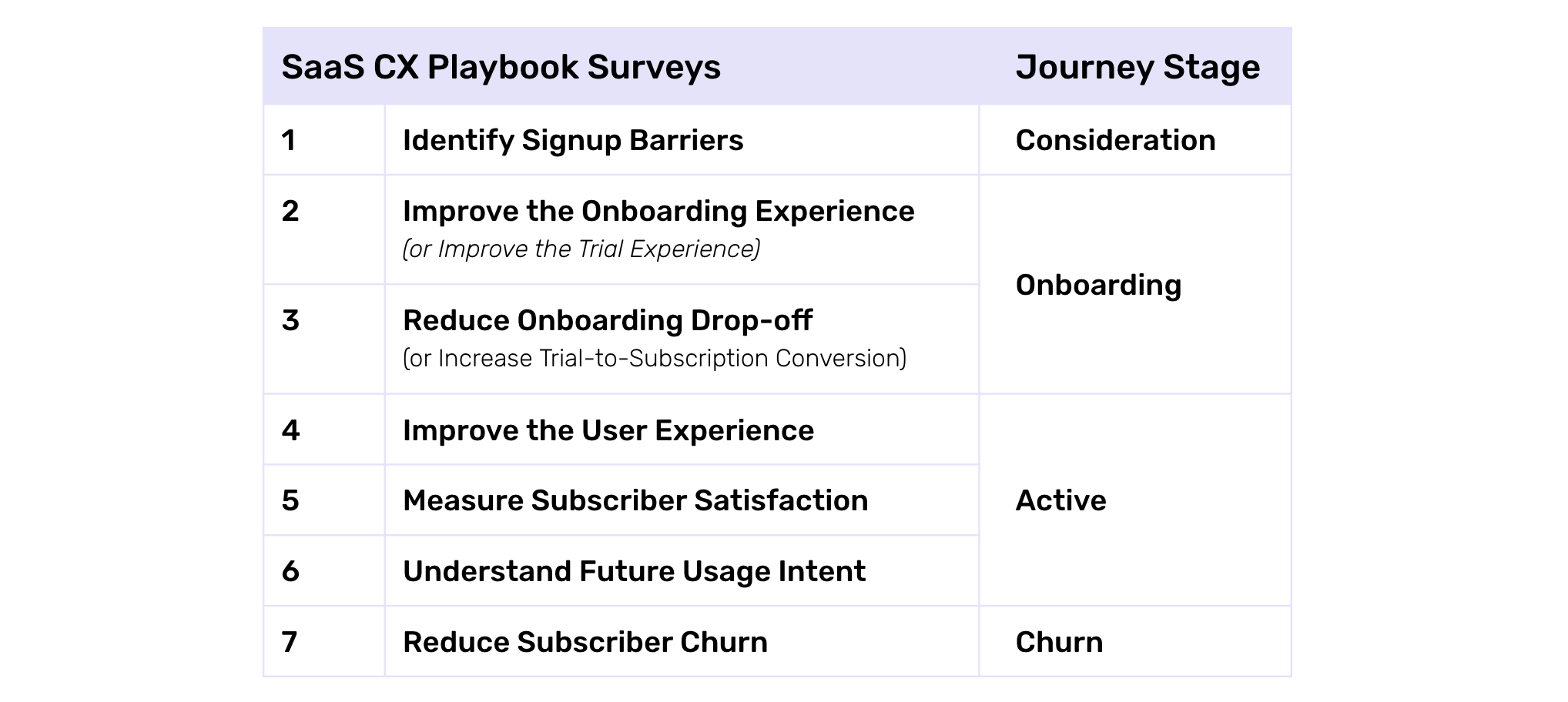
By following the recommendations outlined in this playbook, you can have your CX measurement program up and running in a few clicks.
Consideration
At the consideration stage, your goal is to motivate prospective users to sign up and try out your product by conveying relevant value propositions in a clear and appealing manner. At this point, your customer experience is only just beginning, and it's critical to start your relationship on the right foot.
Identify Signup Barriers
The Identify Signup Barriers study consists of a metric that measures intent to signup followed by an open-ended question to identify barriers that could prevent visitors from moving forward.
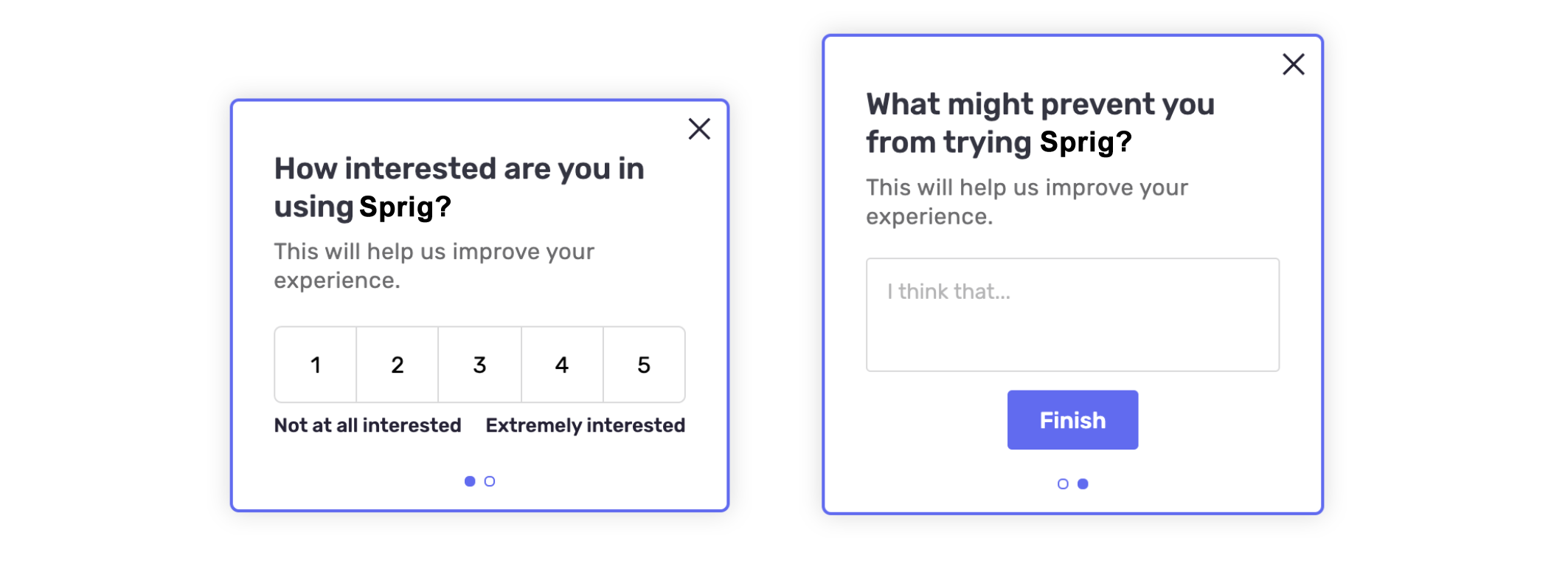
How to Target
Target visitors on your homepage or marketing site who have not yet created accounts.
What You'll Learn
This study will help you understand the level of intent among users visiting your site as well as identifying opportunities to increase conversion through product or messaging optimizations. When tracking over time, this study gives you a valuable metric to measure progress against as you make improvements to your product and messaging.
Onboarding
The onboarding stage is among the most critical moments in the customer journey. You've sparked users' interest and now you need to make the process of getting started as simple as possible and quickly deliver to keep users engaged. At this stage, we recommend continuously measuring the experience via 2 studies:
- Improve the Onboarding Experience
- Reduce Onboarding Drop-off
Does your product offer a trial period rather than a free version? If so, you should use the similar Improve the Trial Experience and Improve Trial-to-Subscription Conversion studies for this stage instead. These studies are nearly identical to those displayed below with slight wording adjustments to reflect the trial experience.
Improve the Onboarding Experience
The Improve the Onboarding Experience study consists of a metric that measures the overall onboarding experience followed by an open-ended question to identify opportunities to improve.
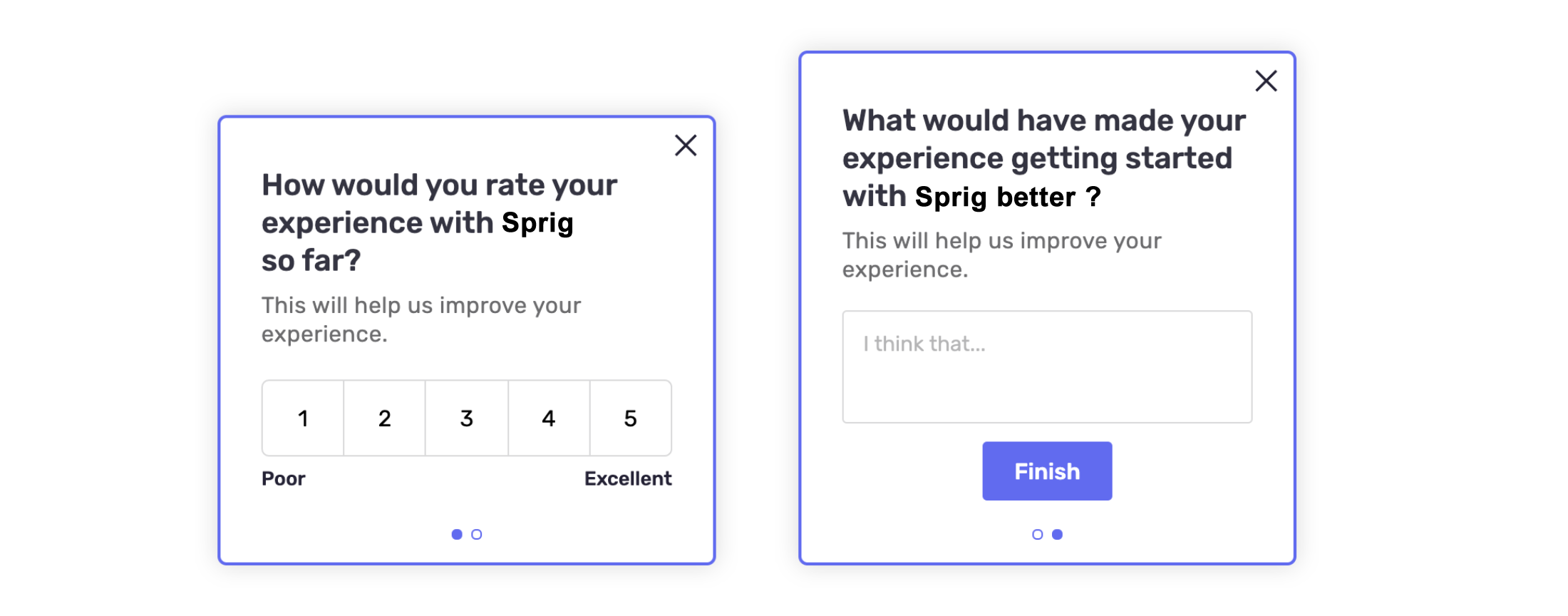
How to Target
Target users in-product immediately after they complete onboarding. You may define this based on any criteria you prefer. For example, for Sprig, it might be defined as having launched your first study.
What You'll Learn
This study will help you understand perceptions about the experience of onboarding to your product and surface opportunities to refine the experience for future users. The metric from the first question in this study is also comparable to other metrics included in this Playbook, so you can compare the user experience during onboarding to the experience at other stages of the journey to identify gaps.
Reduce Onboarding Drop-off
The Reduce Onboarding Drop-off study consists of a metric that measures the overall onboarding experience followed by an open-ended question understand the reasons why users did not complete onboarding.
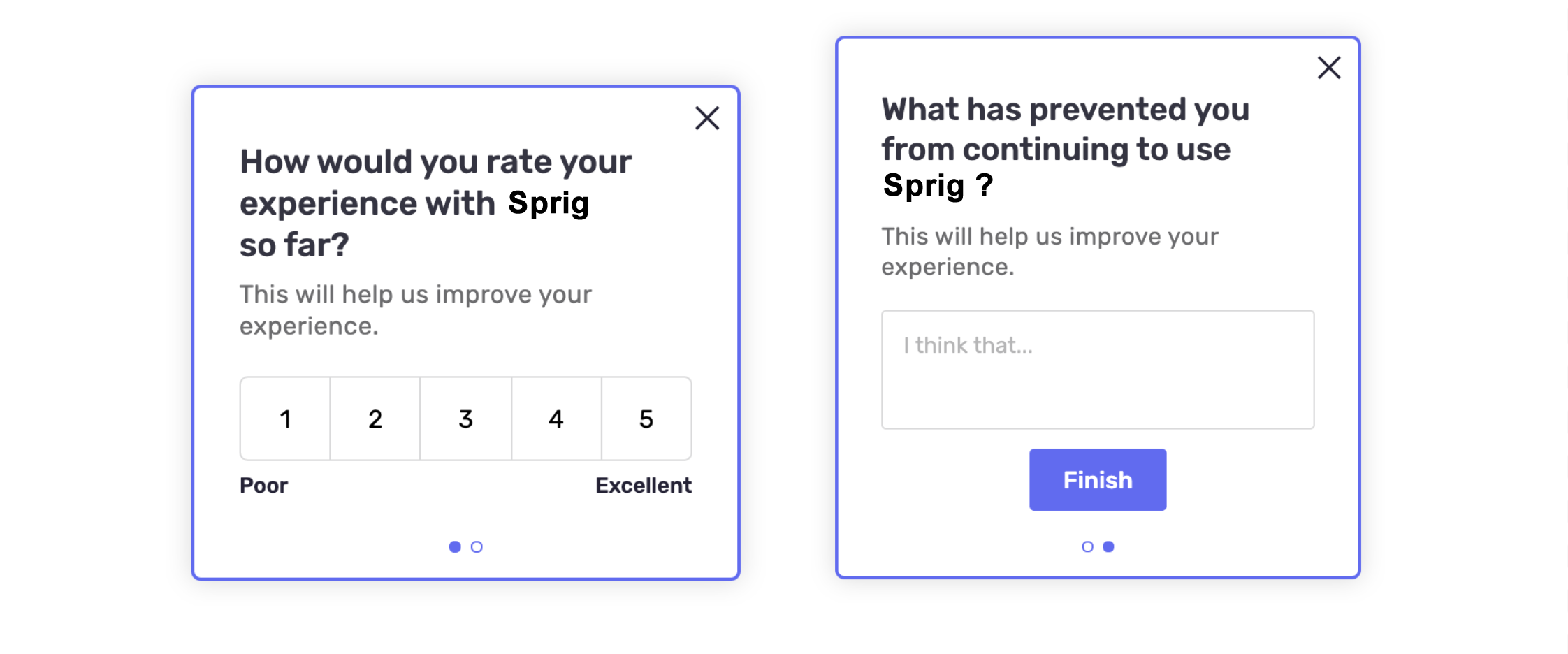
How to Target
Survey users who have become inactive before completing onboarding. For many companies, this is represented as 7 days of inactivity, but you should set the inactivity period based on typical usage patterns for your product.
What You'll Learn
This survey will help you understand how the onboarding experience for users who did not complete the process compares to those who did and identify where gaps emerge. This survey also surveys opportunities to reduce onboarding drop-off through open-ended feedback.
Active
Whether you have a freemium model or only offer a paid membership, the Active stage encompasses all users who have completed onboarding. This is your opportunity to deliver on your core value propositions, provide an excellent customer experience, and keep users engaged. At this stage of the journey, we recommend continuously running 3 distinct surveys:
- Improve the User Experience (all active users)
- Measure Subscriber Satisfaction (subscribers)
- Understand Future Usage Intent
Improve the user Experience
The Improve the User Experience survey consists of a metric that measures the overall user experience followed by an open-ended question to identify opportunities to improve.

How to Target
Target users active users in-product.
What You'll Learn
This survey will help you understand perceptions about the overall experience using your product, track progress over time, and compare experience ratings among active users with ratings during onboarding. This surface will also continuously surface and prioritize the highest priority opportunities to improve the experience.
Measure Subscriber Satisfaction
The Measure Subscriber Satisfaction survey consists of a metric that measures subscriber's satisfaction with your product followed by an open-ended question to identify opportunities to improve.
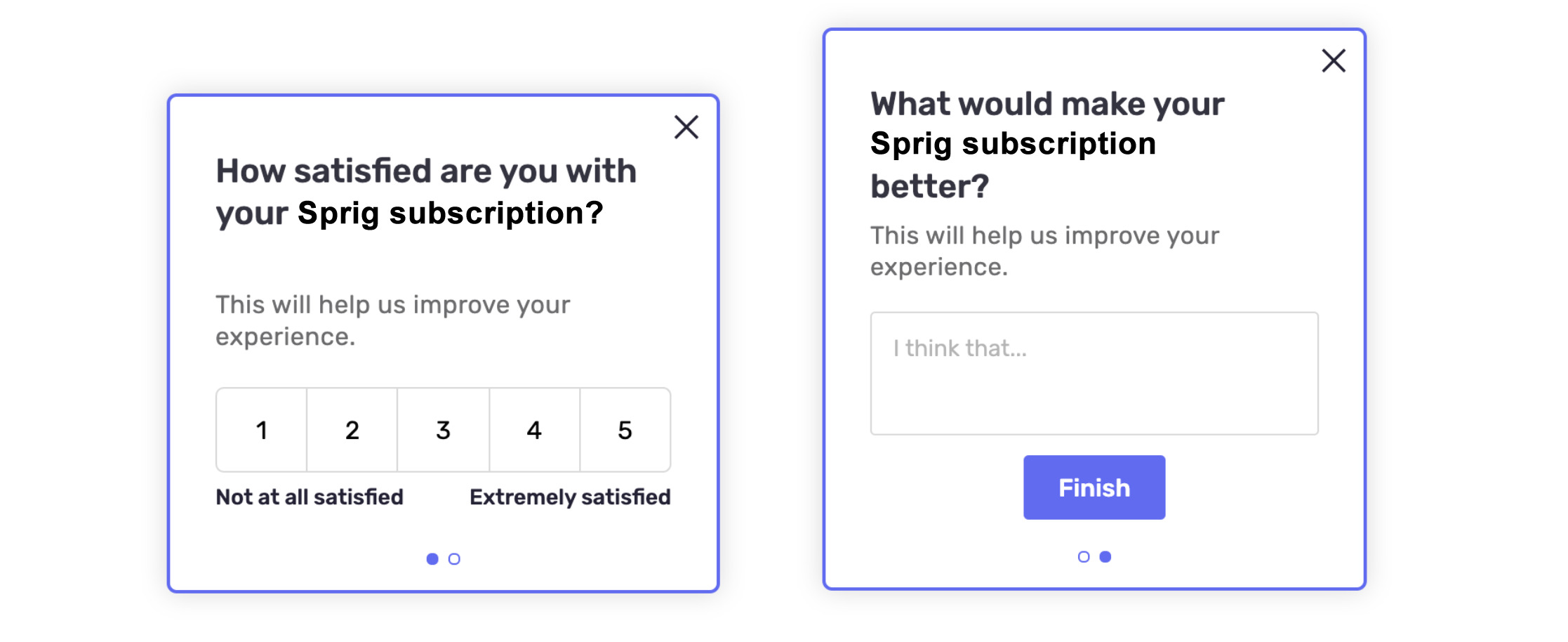
How to Target
Target paid users; link study sent via email is typically recommended.
What You'll Learn
This survey gauges perceptions of the overall customer experience among your highest value users. Track this metric over time to measure progress as your product and/or subscription plans evolve and identify the highest priority opportunities for improvement to keep your paying customers satisfied.
Understand Future Usage Intent
The Understand Future Usage Intent survey consists of a metric that measures customers' likelihood to continue using your product followed by an open-ended question to identify opportunities to increase the likelihood of continued usage.
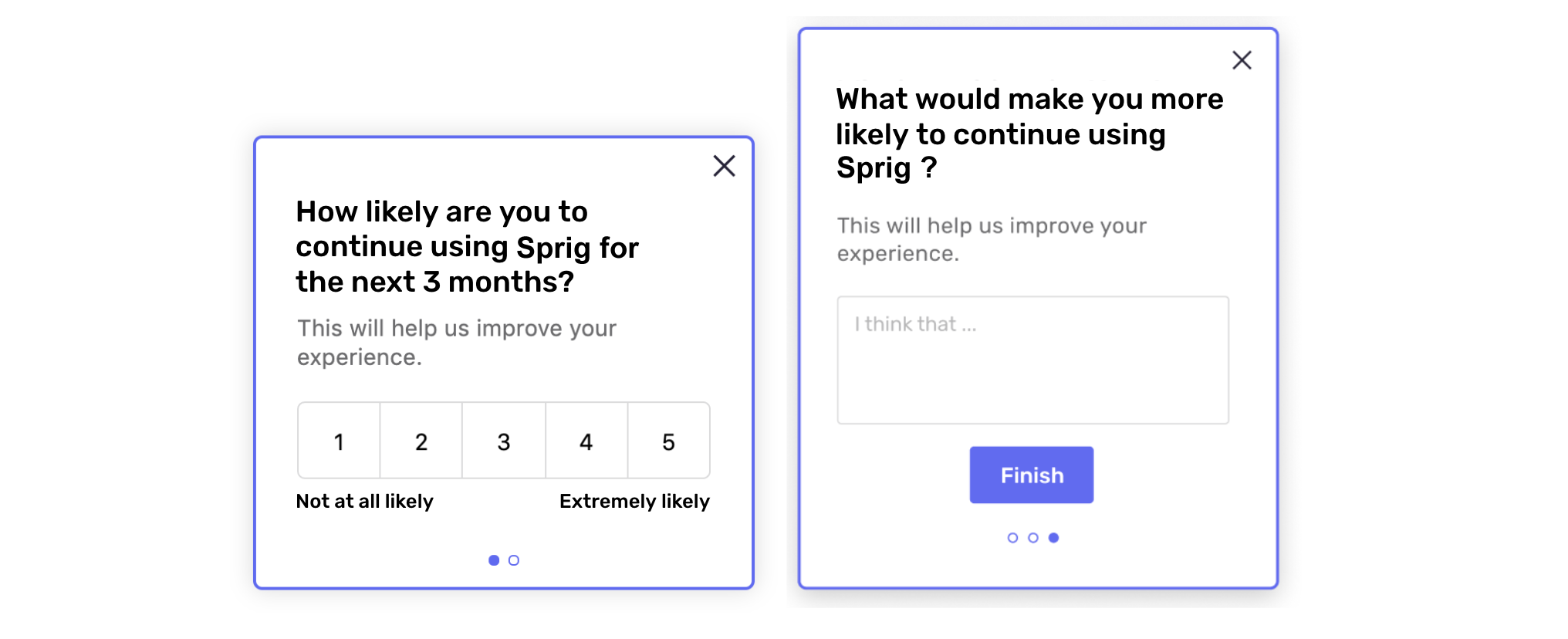
How to Target
Target paid users via link study in email. This survey can be asked at any point after onboarding; however, for annual subscriptions, it can be particularly valuable to trigger this survey 2-3 months before renewal.
What You'll Learn
This survey gives you an early gauge and churn risk and allows you to track how efforts you make to improve other aspects of the customer experience impact intent. This survey also surfaces opportunities to increase retention.
Churn
By following through on the insights you'll be gaining from the continuous surveys covered to this point, you should make rapid progress to reduce churn. However, it is still critical to understand the experiences that lead users to cancel their subscriptions to further hone in on the more direct path to reducing churn.
Reduce Subscriber Churn
The Reduce Subscriber Churn survey consists of a metric that measures canceled subscriber's satisfaction with your product followed by an open-ended question to identify the reasons for cancellation.
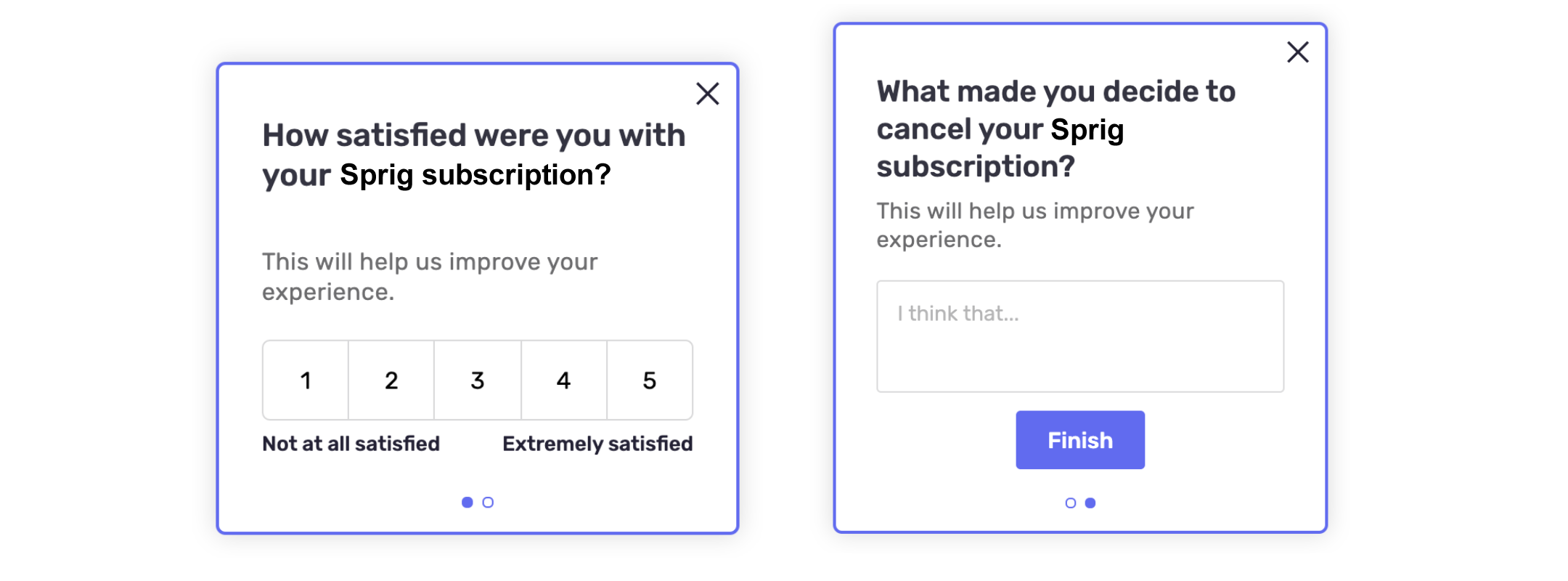
How to Target
Target canceled subscribers via link study in email 24 hours after cancellation.
What You'll Learn
This survey gauges perceptions of the overall customer experience of paid users who canceled their subscription in a way that is comparable to the Measure Subscriber Satisfaction survey, allowing you to identify gaps in the experience. Track these surveys over time to measure progress and identify the most substantial opportunities to prevent churn in the future.
Updated over 2 years ago
